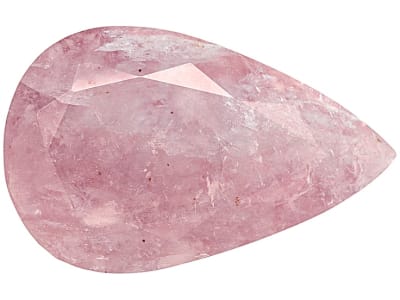Ussingite was discovered in 1914 in a pegmatite at Kangerdluarusuk, Ilimaussaq, Greenland. It is named after Niels Viggo Ussing, professor of Mineralogy at the University of Copenhagen. This rare silicate mineral has only been found in Greenland, Canada, and Russia. The mineral is triclinic, but it is most often found in its massive form and can be light pink, lilac-blue, and in rare cases dark violet-red. When crystals are found they are blocky to tabular with dominant pinacoidal forms and can show a monoclinic pseudosymmetry. The mineral often shows lamellar twinning. It can be easily separated from sodalite due to its lack of fluorescence.
General Information
LWUV: inert
Ussingite Colors
-
 Pink
Pink -
 Purple
Purple
Countries of Origin
Canada; Russian Federation; Unknown; Denmark
Care
Ussingite is brittle so take care when handling.
